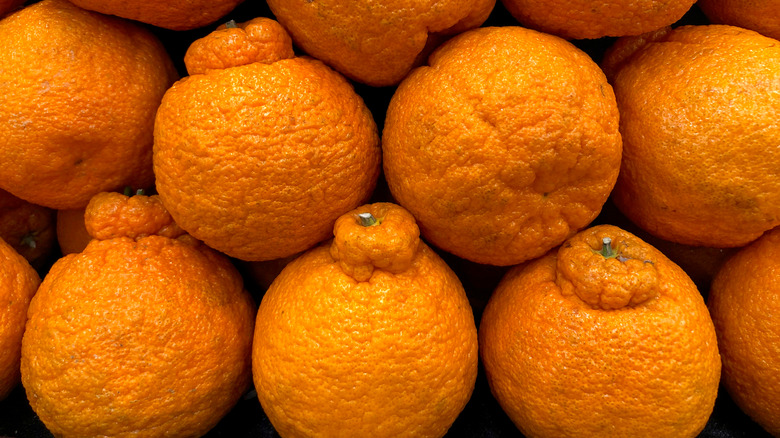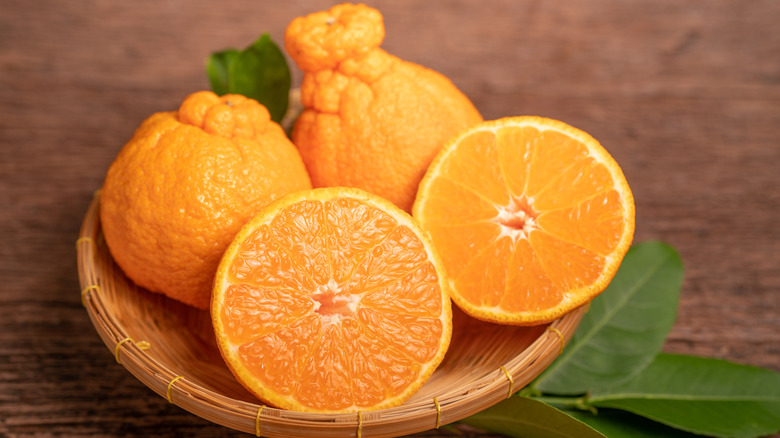Are Sumo Oranges The Same Thing As Mandarin Oranges?
For those who have a certain appreciation for rare and expensive fruits, there are few places better than Japan where fruits are customarily exchanged as gifts and the industry for luxury fruits is thriving. It's not uncommon to go into the markets of Japan and find giant strawberries going for $4,395 a piece or a bunch of ruby-colored round grapes priced at $880 (via CNN). In fact, a pair of Yubari melons from Hokkaido was auctioned at a whopping $27,000 in 2017, per Taste Atlas.
It's no surprise that some of the most uncommon fruits come from Japan and sumo oranges are no different. Although sumo oranges are nowhere close to being as expensive as other Japanese fruits that are often sold at the price of a car, this orange citrus fruit still has a steeper price tag than regular oranges (via Better Homes and Gardens).
Sumo oranges were originally cultivated in Japan in the 1970s and its plants were later exported to the U.S. in 1998, but it wasn't until 2011 that Californian farms smoothened the obstacles that came with producing the notoriously hard-to-cultivate fruit and make it widely available (via Sumo Citrus). This perhaps explains why a pound of sumo oranges grown in California will cost you about $3, according to Todays Health Science. So how, exactly, are they different from the good old' mandarin oranges?
Sumo oranges are a hybrid of three citrus fruits
Sumo Citrus explains that sumo oranges, or sumo citrus, are also known as the Shiranui variety of oranges or dekopan in Japan. The large-sized oranges get their peculiar name from the protruding bulbs on top of the fruits which resemble the signature top knot hairstyle of sumo wrestlers.
According to Health, sumo oranges aren't mandarins but rather, the crossbreed of three different varieties of citrus fruits: mandarins, pomelos, and navel oranges. Where mandarins are smaller than common oranges, sumo oranges are much larger and can weigh nearly eight ounces. Because of the discrepancy in size, there are also nutritional differences between mandarins and sumo oranges. While an 88-gram of medium-sized mandarin makes up for 26% of the Daily Value of vitamin C, a single sumo orange can make up nearly a 163% (via Healthline).
Besides the differences in size and nutritional profiles, sumo oranges are also famous for their incredibly sweet flavor which beats the sweetness of most citrus fruits. Sumo Citrus goes on to describe the fruit as being firm and juicy but easy to peel, seedless, and mess-free which is a rare combination when it comes to enjoying citrus fruits. It takes four years for citrus trees to begin to yield sumo oranges, making them one of the toughest citrus fruits to cultivate. Even then, sumo oranges are only in season for four months of the year, from January until April meaning, it's a good idea to enjoy the sweet and juicy oranges while the brief sumo orange season lasts.

